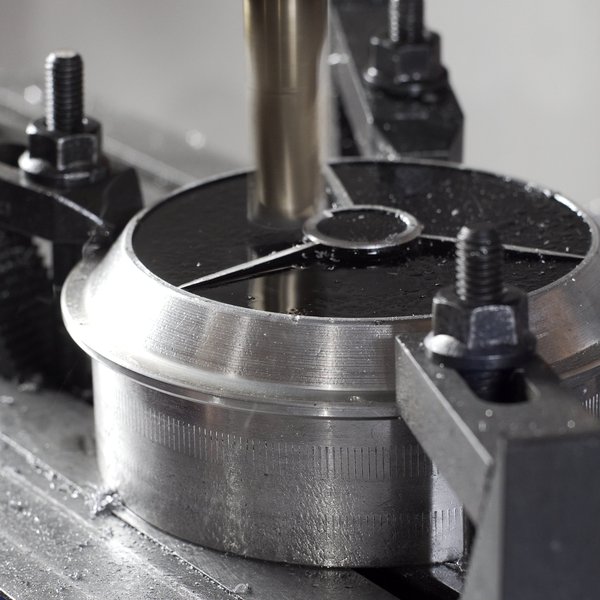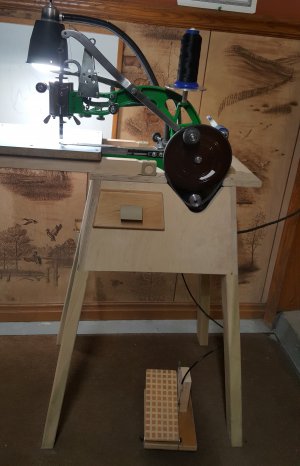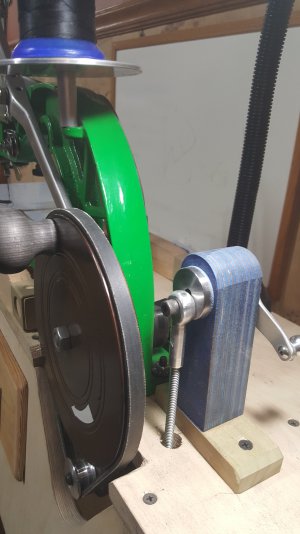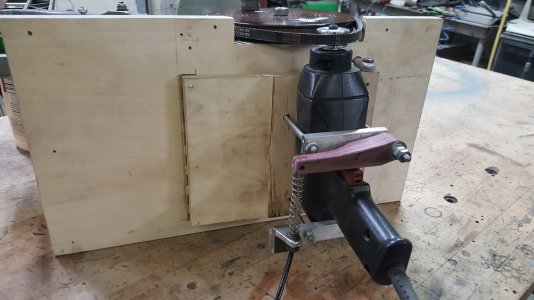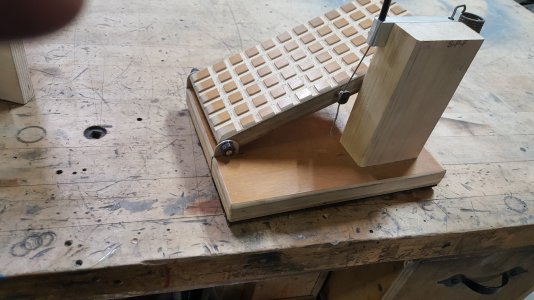- Joined
- Feb 7, 2013
- Messages
- 2,485
There are several projects I would like to complete using a heavy duty leather machine. Most of these machines are quite expensive
with the exception of the "cobblers sewing machine" you can get on E-Bay for $100. I have one on order and plan to electrify it using a
gear reduction wheel chair motor that has been laying around in the shop just waiting for an application.
This will involve some machining to make it a powered machine.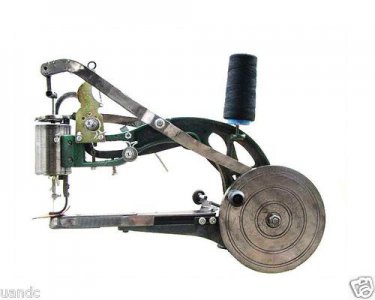
The project will involve building a stand as well as motorizing the unit. These machines are quite crude and do require a bit of
fine tuning to be a nice working leather machine. The wheel chair motor will be powered using a Variac and a home made DC
power supply. The Variac will provide the ability to have a dependable variable speed machine. With a long projection on the
business end of the machine, you can put patches on the knees of jeans easily. That's something not possible on the standard
Singer type machine plus the Singer will not sew through 3/8 inches of leather. It will be a good winter project and I can see many
uses for it already when it is up and running.
I will make several more posts as the project unfolds so will take several photos along the way.
The more I think about this, it might be better to use a mosfet transistor for the variable supply but have not had
much experience using them. The Variac will work but I'm not so sure I want to be constantly be varying the Variac
control. Maybe someone has some experience with some sort of solid state DC voltage control.
with the exception of the "cobblers sewing machine" you can get on E-Bay for $100. I have one on order and plan to electrify it using a
gear reduction wheel chair motor that has been laying around in the shop just waiting for an application.
This will involve some machining to make it a powered machine.

The project will involve building a stand as well as motorizing the unit. These machines are quite crude and do require a bit of
fine tuning to be a nice working leather machine. The wheel chair motor will be powered using a Variac and a home made DC
power supply. The Variac will provide the ability to have a dependable variable speed machine. With a long projection on the
business end of the machine, you can put patches on the knees of jeans easily. That's something not possible on the standard
Singer type machine plus the Singer will not sew through 3/8 inches of leather. It will be a good winter project and I can see many
uses for it already when it is up and running.
I will make several more posts as the project unfolds so will take several photos along the way.
The more I think about this, it might be better to use a mosfet transistor for the variable supply but have not had
much experience using them. The Variac will work but I'm not so sure I want to be constantly be varying the Variac
control. Maybe someone has some experience with some sort of solid state DC voltage control.
Last edited:


